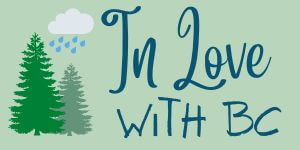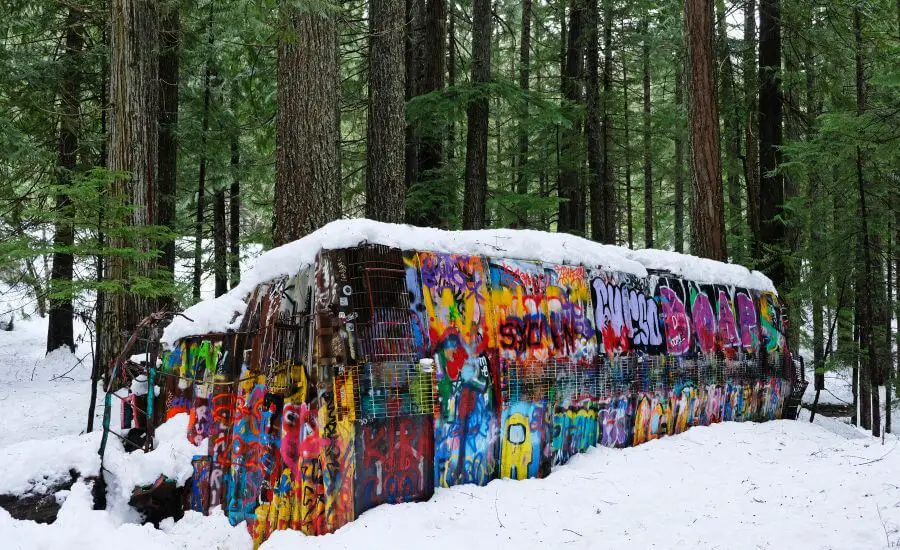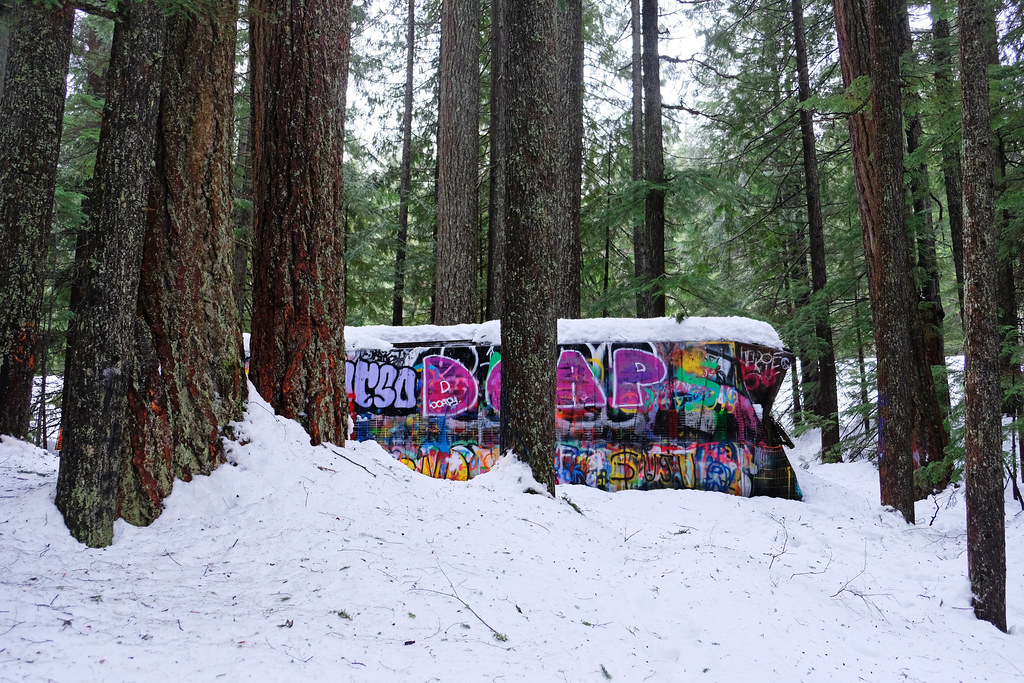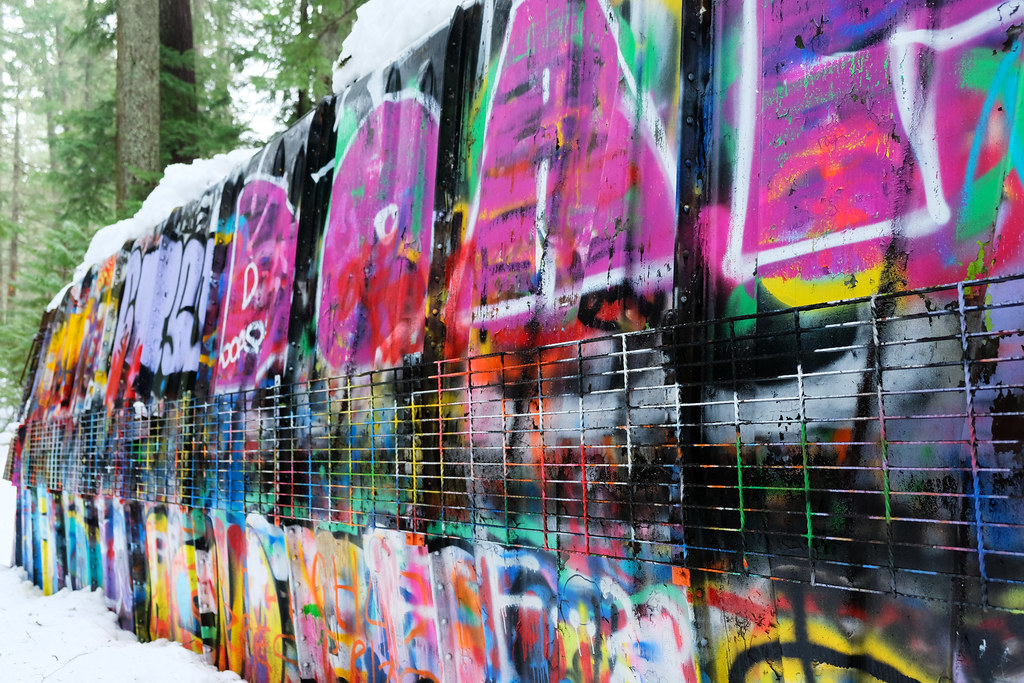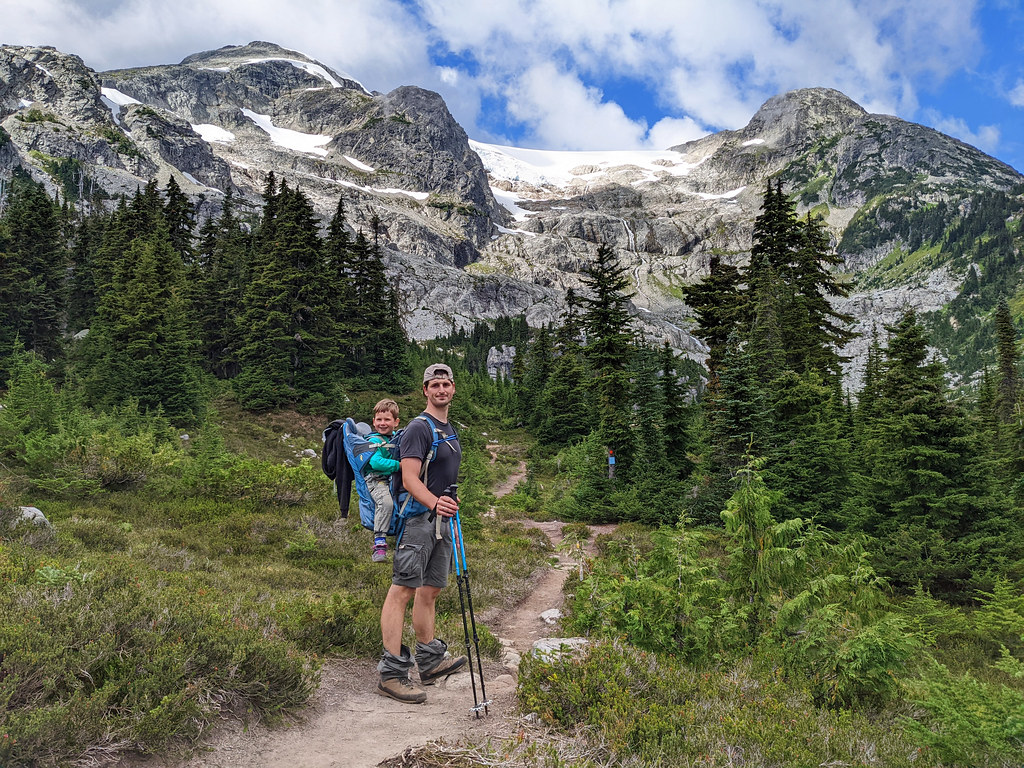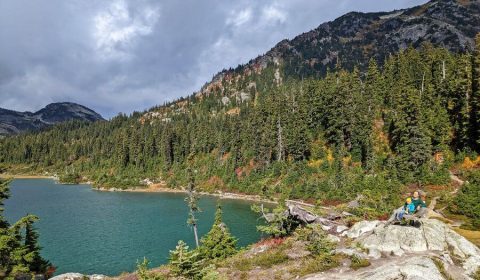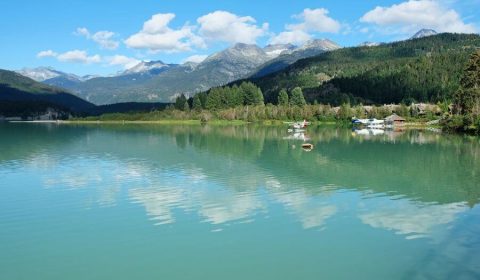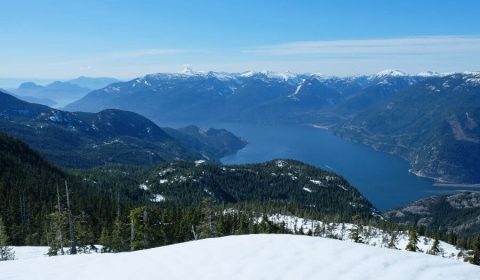Looking for a fun, easy, family-friendly trail in Whistler that’s open year-round and nice to visit in any season? You’ll love the Whistler Train Wreck hike, a popular attraction near the Cheakamus River, just south of the village of Whistler. What does it offer? Vibrantly painted railway boxcars hidden in the forest, a suspension bridge with pretty views over Cheakamus River and some small, but powerful waterfalls on the pristine river.
I found this hike as I was searching for easy trails in Whistler in the winter. We had almost zero experience in winter hiking, but we had a 2-year-old toddler who couldn’t walk in the snow for long. Hard combination? Maybe, but still we ended up finding quite a few enjoyable winter walks in Whistler.
But I had to choose trails where we could carry our son all the way, and ones which are short enough that no diaper change is needed, because those winters are really cold. Oh, and the trail should be interesting, because that’s why we enjoy hiking in the first place. The Train Wreck hike in Whistler ticked all of those boxes, and I think it’s among the best family-friendly hikes in Whistler in any season.
Best accommodations in Whistler:
- Luxury: The Westin Resort & Spa (top location)
- Mid-range: The Listel Hotel
- Budget: Pangea Pod Hotel (capsule hotel at excellent location)
Where to park for the Whistler Train Wreck Trail?
The hike to the Whistler Train Wreck starts in the Farside-Riverside area in Whistler. There’s a dedicated parking lot for the Train Wreck Trail adjacent to the north west side of Bayly Park on Jane Lakes Road, just off Cheakamus Lake Road.
It’s typically plowed in the winter months, because the trail is popular. Hence accessing with a 2WD is not a problem in any season. But expect a high wall of snow along the roadside in winter which might limit the number of parking spaces.
Looking for more fun, snowy or snow-free winter hiking in British Columbia? Check out these posts:
- 30 Best Winter Hikes In Vancouver
- 20 Best Hikes In Squamish
- 17 Best Waterfalls On Vancouver Island
- Whyte Lake Trail: The Best Rainforest Hike In Vancouver?
- Cox Bay Lookout Hike: The Best Panorama On Vancouver Island
Hike to the Train Wreck in Whistler
The trail to the Train Wreck is an easy forest trail. You find countless more impressive trails in the Whistler area, but few of them are so easy and accessible all year. That and offering several interesting sights on the way are the reasons for its popularity.
To reach the train wrecks, you descend gradually on the Sea to Sky Cheakamus Trail. There’s signage about the train wrecks, and it’s usually quite an obvious trail to follow even if the snow is deep, because the trail is busy and well-worn.
Soon you’ll reach a junction where you need to follow the Trash Trail that takes you through a suspension bridge over Cheakamus River. Suspension bridges in the Vancouver and Whistler area are quite cool attractions, and this one is no exception. It was established in order to provide safe access to the train wreck site, because people previously hiked on the active railway tracks to reach it. It also provides nice river views as you cross the bridge.
The train wreck sight is after crossing this bridge.
History of the Train Wrecks
In the 1950s it was not a rare thing to find train wrecks in this area. Train was the only way to travel between Squamish and Lillooet, and boxcars often shifted and wobbled to the point where one would eventually leave the tracks, often bringing the rest of the cars along with it. But this particular set of boxcars are further from the tracks, among old-growth trees. How did they end up there?
It was the site of a train accident due to speeding in 1956. The easiest way to clear the tracks was to simply leave the destroyed carriages in the forest. But the railway company didn’t have the equipment, so they asked the logging operations led by the Valleau family to help with their logging machinery. They dragged the boxcars into the forest where they have remained ever since.
Graffiti artists painted the abandoned carriages, and they became one of the highlights of this forest trail network. There’s a few carriages (originally seven) a little walking distance from each other, all of them empty and vibrantly painted. Surely, they bring some urban vibe into the wilderness.
How to extend the Train Wreck hike?
From the train wreck, you can turn back (a shorter version of the hike) or continue on Millar Creek Trail. Millar Creek Trail is not nearly as well-trafficked as the route until the train wreck, so expect challenges finding the trail in deep snow. Also, you might need snowshoes on this section of the trail. We were not that impressed, and it’s simply a forest trail, crossing train tracks, so we turned back to find a different extension.
We decided to follow more of the Trash Trail along the Cheakamus River. Though it’s not a long extension, it’s a nice one, with river and waterfall viewpoints. The waterfalls are small, but powerful, and the snowy landscape adds a special charm to it. Some riverside access points are nice places for a picnic in the summer.
We included both extensions on the trail map at the end of this post, and they make the hike altogether 6 km. You can hike longer on the Trash Trail than we did, all the way to Legacy Way. Since we didn’t have snowshoes, only microspikes when hiking this trail, we turned back once the snow on the path became too deep.
How hard is the Train Wreck trail?
Reaching the train wrecks is a short and easy hike, ~2.5 km return, merely a walk to many people. You can easily extend it as there’s a large surrounding trail network, but the terrain will likely be just as easy, and the trails are in the forest, offering no vistas.
Millar Creek Trail (until the Function Junction) is the usual extension, but we didn’t find it too interesting. It’s close to the highway and crosses an active train track. We liked the Trash Trail much better as it runs along the Cheakamus River, offering nice river and waterfall views, but it doesn’t add much distance.
All in all, if you’re looking for an easy hike to get outdoors, enjoy the forest, the pristine river and the quirky train wrecks, you’ll love this hike. But if you’re looking for a challenging trail, this one won’t suffice.
Best time to hike to the Whistler Train Wreck
You can do this hike in any season, but winter is our favorite. The forest and Cheakamus River looks magical in the snow, it simply adds a special fairy tale vibe to the hike. Since it’s so busy, microspikes are usually enough as you’ll hike on packed snow. Visiting between December and March will likely be a fairy tale winter experience, but you might find snow here in November or April, too. It’s about the same elevation as Whistler Village, so just check the webcams for the base station of the ski resort to see whether there’s snow.
What to wear hiking in the winter?
Dress in layers:
- synthetic or wool base layer (for men, for women)
- insulating midlayer (for men, for women)
- outer layer to protect you from wind, rain and snow (for men, for women): no need for an insulated jacket for day hikes near Vancouver, as you’ll get easily overheated in ski jackets; just make sure it’s waterproof
- hiking pants (for men, for women)
- optionally, rain pants: they should be worn over your hiking pants in wet conditions, or simply to shield you from the wind and add an extra layer
- waterproof hiking boots (for men, for women) or snow boots
Cover as much of your skin as possible:
- gloves
- wool socks
- gaiters: keep the snow out of your boots when hiking in deep snow
- beanie
- face mask or neck gaiter
Stay safe:
- microspikes: they make hiking on icy, snowy terrain easier and safer
- headlamp: days are shorter in the winter, and you don’t want to get lost in the dark
- emergency blanket
It’s nice in the summer, too, but personally, I’d choose another trail. Summer is short and most of the trails near Whistler are accessible in summer only. Also, many of them are long and require summer days with long daylight hours. You can hike the Train Wreck Trail any time, so why “waste” a long, clear summer day on it?
- Trailhead: Train Wreck Trail parking area, Jane Lakes Road, Whistler
- Length: 6 km return
- Elevation gain: ~100 m
- Difficulty: easy
- Hiking season: all year (microspikes or snowshoes are recommended between November and April)
- See the trail map here!
Where to stay in Whistler?
The village of Whistler offers a wide range of accommodation for outdoor lovers in any season. Summer is popular for hiking and biking, while winter is the high season for skiing, snowboarding and snowshoeing. The best place to stay in Whistler depends on your travel style and plans, and I have some great suggestions for you to choose from.
Whistler in summer
Apartments near the ski lifts in the center of Whistler: Cascade Lodge is 550 meters from the ski lifts (Excalibur Gondola and Whistler Village Gondola) in the heart of the village, with apartments and studios of various sizes and underground parking. Guests also have access to an outdoor heated pool and hot tubs, on-site fitness and laundry facilities.
The best boutique hotel near the ski lifts in the center of Whistler: Summit Lodge is 650 meters from the ski lifts (both from Excalibur Gondola and Whistler Village Gondola) and offers elegantly furnished suites with a kitchenette. Guests can enjoy the outdoor pool and hot tub, and there’s a wide range of activities to choose from any time of the year, like skiing, snowshoeing, mountain biking, hiking, dog sledding, heli-skiing or ziplining. The staff is happy to help you arrange some of these activities.
Fully-equipped, spacious suites in a quiet area: Belle Neige Suites are 7 minutes drive from Whistler Village, or a 15 minutes bike ride on the Valley Trail. It makes for a lovely, peaceful getaway, especially in the summer. You can’t walk to the ski lifts from here, but in case downhill skiing is not included in your trip plans, it’s a perfect location for a winter stay, too. The suites come with full kitchens, free wifi, free parking, and a private balcony or patio.
Wooden cabins with mountain views: Riverside Resort is located about 1.5 km away from the Whistler Village Ski Resort, and the Lost Lake trail network (with maintained cross country skiing and snowshoeing trails in winter) is about 7 minutes walk away. Cabins have their own kitchenette and bathroom, but you can choose yurts, as well, they’re ideal glamping options for a summer stay. Free parking and free wifi is included, and you can rent snowshoes in winter.
